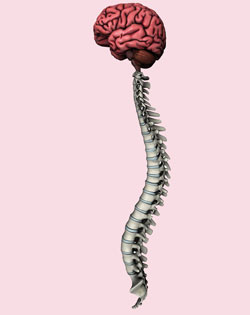The newer, sensitive tests give a much better way to tell who needs help fast. Each year, 15 million people in the United States and Europe go to emergency rooms with symptoms of a heart attack, but most are not truly suffering one.
Those having a heart attack need to have blocked arteries opened quickly to limit damage to the heart muscle from lack of blood.
Doctors currently have two main ways of diagnosing a heart attack. They can use an electrocardiogram, or EKG, to measure the electrical activity of the heartbeat for abnormalities. But that test is not always conclusive.
Doctors also use blood tests to detect elevated levels of a heart muscle protein known as troponin — a sign of heart muscle injury. A drawback with the older troponin tests is they take longer to detect increased troponin levels and by that time, heart damage may have already occurred.
Two European studies published in Thursday's New England Journal of Medicine found that the newer blood tests can improve early diagnosis of a heart attack soon after a person feels chest pain. The studies looked at four tests made by Abbott Laboratories, Roche and Siemens AG. The Abbott and Siemens tests are approved for use in the United States.
"Until this point, we really did not have direct evidence that they improved overall diagnostic accuracy," said cardiologist Dr. David Morrow of Brigham and Women's Hospital in Boston. Morrow wrote an accompanying editorial in the journal and has consulted for Siemens.
In one study, doctors led by the University Hospital in Basel, Switzerland, took blood samples from 718 patients who came into the emergency room with heart attack symptoms such as chest discomfort and shortness of breath. Doctors compared the accuracy of four of the new blood tests with an older test.
In the second study, researchers led by Johannes Gutenberg University in Mainz, Germany, studied 1,818 people who came in with chest pain. Their troponin level was detected by a sensitive Siemens test and a conventional test.
In both cases, the accuracy of the newer tests was 94 to 96% compared with 85 to 90% for the older tests.
Mayo Clinic cardiologist Dr. Allan Jaffe advocates using the newer tests. Several doctors said the new tests do not cost more than the older versions they are replacing, and are usually covered by insurance.
"You diagnose heart attacks faster and you detect more people who are having heart attacks," said Jaffe, who had no role in the studies.
Further studies are needed to determine if earlier detection of heart injury results in more lives saved, the researchers said.
The Swiss study was funded by the Swiss National Science Foundation, Swiss Heart Foundation and the three makers of the tests. One of the authors reported receiving fees from the three companies. The German study was funded by diagnostic company Brahms Aktiengesellschaft. Two of the authors reported receiving fees from test makers.

